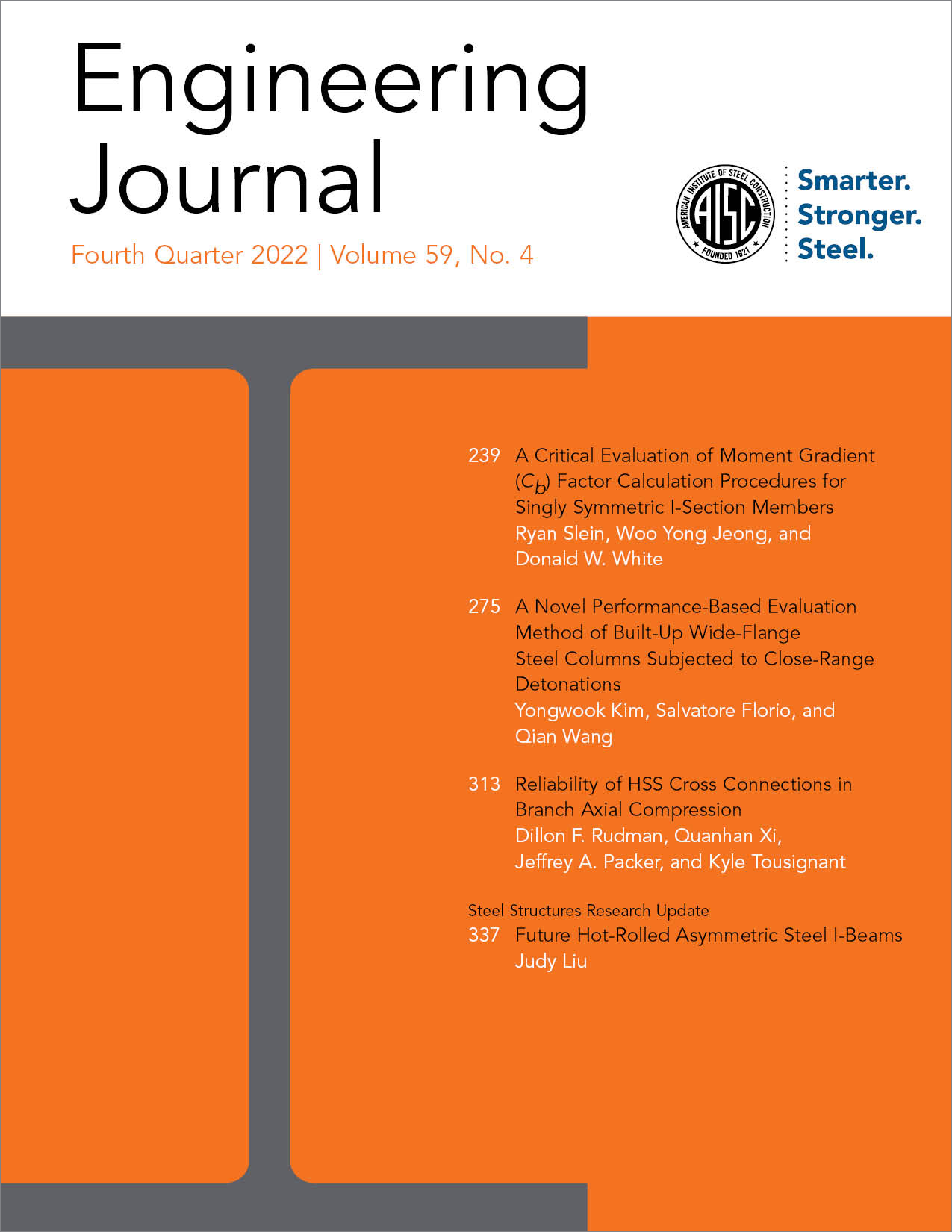A Critical Evaluation of Moment Gradient (Cb) Factor Calculation Procedures for Singly Symmetric I-Section Members
DOI:
https://doi.org/10.62913/engj.v59i4.1304Keywords:
lateral-torsional buckling, moment gradient, singly symmetric I-section membersAbstract
This paper explores the manual calculation of the elastic lateral-torsional buckling resistance of prismatic singly symmetric I-section members having a variation in the bending moment between the brace points. The paper shows that the quarter-point moment gradient factor, Cb, equation in the AISC Specification (2016), as modified by its Commentary, is inaccurate for reverse-curvature bending of singly symmetric I-section members. In addition, the paper explains that the Cb equations in the current AASHTO Specifications (2020) provide some accounting for the different patterns of compression in the separate flanges for cases involving moment reversal. To rectify the limitations of the ASC and AASHTO methods, the paper recommends a modified form of an alternative quarter-point Cb equation proposed by Wong and Driver (2010). For singly symmetric cases involving moment reversal, the terms in the quarter-point equation are replaced by the ratio of the moments to the corresponding elastic buckling moment based on Cb = 1, considering which flange is in compression at each of the locations where the moments are sampled. The studies show that the Wong and Driver equation, with this modification, provides substantially improved accuracy compared to the existing AASHTO and ASC equations for reverse-curvature bending with slightly less calculation effort. In addition, the paper demonstrates the accuracy of the direct application of the Wong and Driver equation for single-curvature bending cases.

